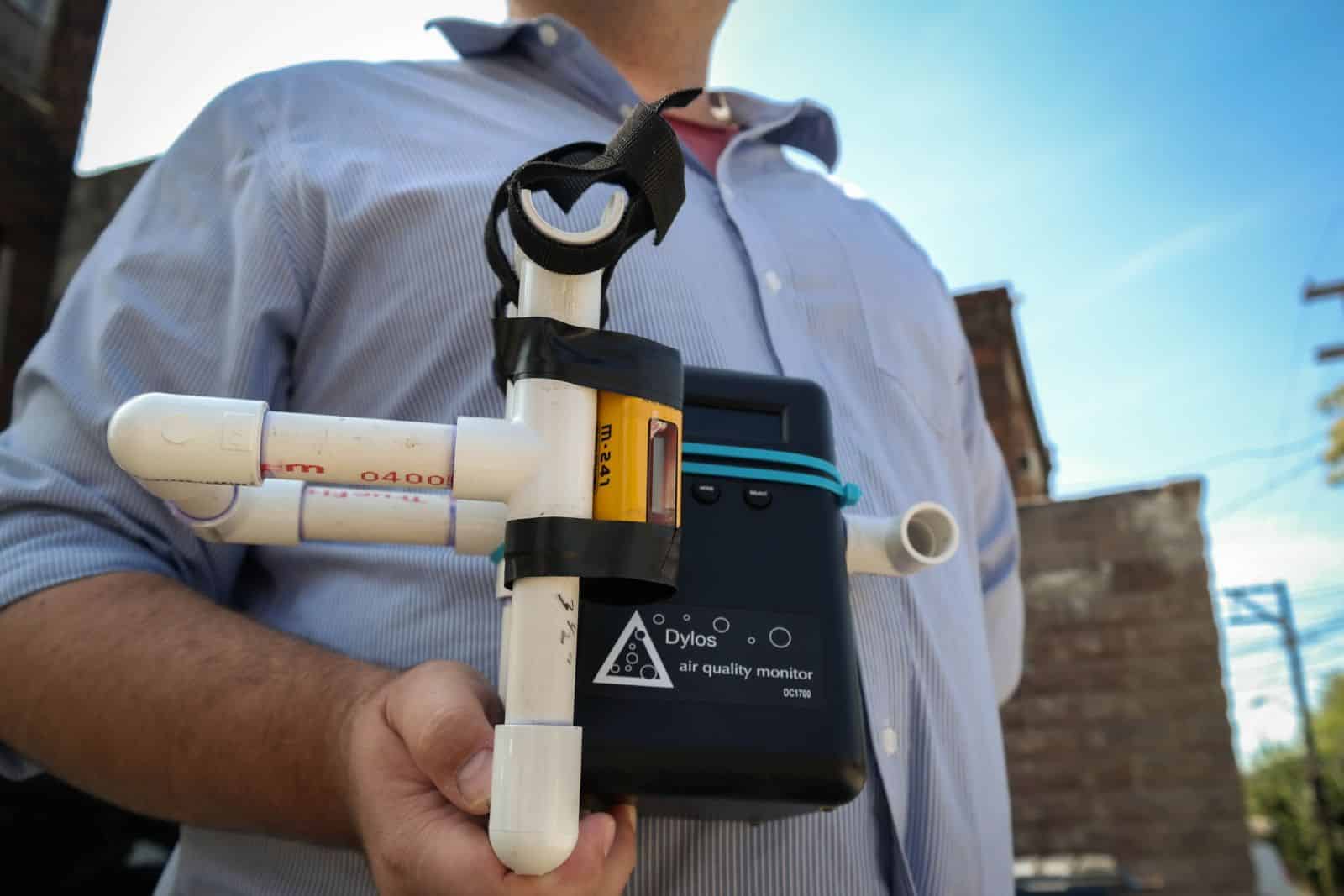
GASP’s air quality monitor is a mix of high and low tech: PVC pipes, Velcro and rubber cement make up a DIY bracket that holds a sensor that measures air quality using lasers. Photo: Lou Blouin
According the the Allegheny Front’s article about GASP’s air quality monitoring program, Butler Street’s air pollution registered four times lower during OpenStreetsPGH than normal operating hours.
From the article:
GASP recently did a more targeted ride to try to get a handle on just how much of the city’s air pollution comes from vehicles as opposed to factories and power plants. For this, they had to get a little creative: They took advantage of an event in Pittsburgh called Open Streets. During this event, several major roads were opened up to bikes, street yoga and just about anything but cars.
“So we had our volunteers put our monitors on their bikes and go up and down the route twice. They did that during an Open Streets event. And they did it on another day when traffic was back to normal.”
And the result? GASP’s monitors found pollution levels were about four times higher with cars than without. And this kind of street-level data from specific sites can have big implications as the city plans new infrastructure. For example, Bogi says they’re seeing that having protected bike lanes that separate bikes from cars by just a few feet—or planting tree buffers between bike trails and nearby highways—can significantly reduce your pollution exposure.
Read or listen to the full article on the Allegheny Front website
Sign up for Bike Pittsburgh’s newsletter, The Messenger, to get the latest news on events, bike and pedestrian infrastructure, and fun, delivered straight to your inbox. Twice monthly emails, no spam.
1 Comment
[…] on the Network today: Bike PGH reports that air pollution levels on neighborhood streets dropped dramatically during an open […]